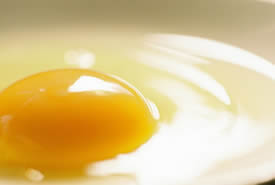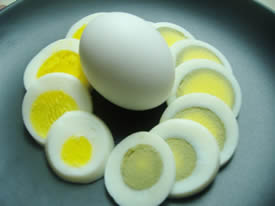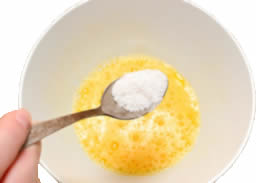| BlueSky Business Aviation News | |||||||||||||||||||||||||||||
| . | |||||||||||||||||||||||||||||
For some reason this rhyme sticks with me. I must admit that I hum it in the same rhythm as they use in the ad while I create a menu item whose main ingredient is the “incredible edible egg” such as omelets, breakfast sandwiches, burritos; basically anything breakfast. Dr. Seuss has written books that talk about green eggs and ham; " I can, I can, yes green eggs and ham." The “incredible edible egg” has a very minimal cost, high in protein for such a versatile food (One egg has 13 essential vitamins and minerals in varying amounts, high-quality protein, unsaturated fats and antioxidants, all for 70 calories). Yes, it is one the top 8 most common allergens and we always need to consider this when planning menus for service on board the aircraft. (Trivia tidbit for you . . . the egg allergy is most common in children and seems to be outgrown in a large percentage of people as they get older). It really is incredible, don’t you agree?
But, I have to ask, if it is so perfect, then why do we tend to save it and use eggs primarily for breakfast? Why aren’t we serving eggs for other meals, for snacks, for appetizers and even dessert? Yes, I did say desserts. The egg is one item that is so versatile it can be elegantly presented as an appetizer or as simple as a scrambled egg. I thought it would be fun to explore some of helpful information about cooking eggs on board as your primary protein. I think it is best that we start at the beginning; how do you determine if the egg is fresh?
How long will an egg last? Fresh eggs in the shell, when properly chilled in a refrigerator or properly chilled on the aircraft, have a liberal four week shelf life. On the other hand, if prepping for front loaded catering, fresh egg whites will keep out of the shell tightly covered and properly refrigerated for only four days; egg yolks out of the shell for a day or two less but will need to be covered with water. Hard-cooked eggs will keep for a week properly refrigerated. BUT, and here is the big caution . . . For every two hours out of the refrigerator, you are aging the egg by 1 week. That is worse than the dog’s life of 7 years to one human year! I know many of you request your catering source to prep your eggs in advance for you to finish cooking on board. There are several precautions that you should be aware of when ordering eggs that are delivered out of the shell. Watch out for cross contamination. Be careful to wash with hot, soapy water all utensils and surfaces which have come in contact with any broken egg juices. There are numerous documented cases of eggs containing salmonella and causing illness so caution should be taken in handling. Although the overall risk of egg contamination is very small, the risk of foodborne illness from eggs is at its highest level while the egg is raw or lightly cooked. To mitigate your risk and ensure food safety, I would suggest, especially for aviation, you replace all your eggs with pasteurized shell eggs or pasteurized egg products while working on board. Storage and reheating your eggs. Place the eggs, whether in the shell or broken, in the lower area of your chiller box or ice drawer. Keep in mind that eggs can absorb odors from your refrigerator if stored in an open container, If you have a temperature probe on board the recommended temperature for cooked eggs is 160° F to destroy any salmonella present. A good rule of thumb if you have no probe is to cook eggs until the whites and yolks are firm. For your safety do not leave eggs at room temperature for more than 2 hours, AND this includes the transportation time from your catering source to the FBO/handler. If you happen to be in an area where the eggs are exposed to an outside temperature greater than 85° F, then the eggs should be discarded after 1 hour, preferably after 30 minutes. Microwaving eggs. A big word of warning that I hope you know already is to never, never, never microwave an egg in the shell. It will explode and could cause damage to the aircraft microwave, interior finishes and surfaces of the cabin. Not to mention burns you might receive. The explosion occurs due to a build-up of steam that can’t escape from the shell. Be sure that if you are cooking an egg in the microwave, remove the egg from the shell and prick a whole in the yolk to allow that steam to escape, or beat the egg before microwaving.
Second, if you only have an oven to reheat, the catering source can place a piece of baking paper in the bottom of a foil pan to also eliminate this from happening as well. A third way to neutralize the sulfur reaction is by asking the catering source add milk or a dairy product when scrambling the egg. At Tastefully Yours, we put one tablespoon of softened cream cheese per egg into the egg mixture before cooking. This prevents the green eggs from developing and also keeps the eggs tender and light after reheating rather than dry and rubbery. I would suggest this for omelettes and scrambled eggs. ( I learned this trick from one of my very first chefs who had come to me from years as a hotel buffet chef, and this was the technique he had used to keep eggs sitting in a chafer for long periods from drying out as quickly.) If you do use this method, be cautious since milk is also a top 8 allergen. Simple trick though, right? Since we have the basics down, let me give you a few bits of information to cook the perfect egg. A hard cooked egg is generally the egg you see turn green the most, but, can be avoided by a simple process.
Place your raw eggs in a pan and cover with cold water about an inch over the top of the eggs. Here is the trick to make peeling easier later on; add a generous amount of salt to the cooking water, and if you also add a bit of plain vinegar, they won’t crack while boiling. If you want the yolk to appear in the center of the egg when cooked and not off at one end or the other, simply stir the eggs while the water comes to a boil. As soon as the water boils, remove the eggs from the heat, cover and allow to them rest for 12 minutes. Finally pour off the water and replace with cold water to stop the cooking process and the over coagulation of the protein, or guess what…you’ll have green eggs. Chill completely and these hard cooked eggs will last properly refrigerated (at or slightly below 40° F ) for 7 days. How to freeze eggs Hard cooked eggs will turn very rubbery, tough, and will water when thawed, so I do not suggest freezing them cooked. You can prepare and freeze omelette shells for those multi-leg long haul trips, but if you do, be sure and separate the cooked shells between waxed paper before freezing, and seal securely in a freezer Ziploc bag. Then as you need to prepare an omelette, all you need to do is thaw, add a filling and reheat in the microwave. Viola! To freeze raw eggs, simply beat the whole eggs until blended, pour into a Ziploc bag or other container, then label with the number of eggs, the date and freeze for up to 1 year. If you find that you are going to be scrambling eggs for 3 crew and 2 passengers, then prepare your frozen egg kits with the correct number of desired eggs. If you want to add seasoning and a bit of milk or cream cheese you can do so at this step. A quick and easy solution to breakfast on board - and if you froze the egg mixture in a sturdy Ziploc, you can simply toss the bag in the trash.
If you happen to have a passenger who wants only egg whites, you can freeze these also. A simple trick for front loaded catering is to place one egg white in an ice cube tray that was lightly sprayed with non-stick coating and freeze. Pop out frozen whites and drop in a Ziploc or storage container to store in the freezer or under dry ice. Be sure to label with container, the number of egg whites per unit and also the date. You cannot refreeze eggs once thawed and they must be used as soon as they are thawed. If frozen in mass, your portion for one egg white is about 2 tablespoons. Plain egg yolks are easy to freeze as well. The secret here is to freeze the yolk beaten. Raw egg yolks require special handling to keep the yolk from becoming so gelatinous they will be almost impossible to use. To help in the prevention of this add 1/8 teaspoon salt to each 1/4 cup egg yolks (4 Large yolks). You can pack the same way… Label the container with the number of yolks, the date and note that you’ve added salt. Simple, right?
There is so much information about eggs and so many menu creations you can prepare and serve on board. Next time I'll suggest loads of menu items for the aircraft that your catering source can prepare or that are quick and easy for on-board preparation. So stay tuned! Let me introduce myself . . . My name is Paula Kraft and I am founder and President of Tastefully Yours Catering, an aviation specific caterer, located in Atlanta, Georgia for over 35 years.
Currently I am an active member of the NBAA Flight Attendant Committee Advisory Board and the NBAA International Flight Attendant Committee, Women in Corporate Aviation, Women in Aviation International, National Association of Catering Executives, International Flight Catering Association, the International Food Service Association and the International Caterer’s Association. I have coordinated training programs and clinics for NBAA, EBAA and BA-Meetup conference attendees for over 10 years, created mentoring programs for caterers and flight attendants to broaden their aviation culinary skills, and to assist them in adapting to the unique challenges and constraints found in catering for general aviation. I recognize the need for training and have worked closely with flight departments, flight crews, schedulers and customer service reps at the FBOs to ensure that catering specific training provides information and skills necessary to reduce risk while assisting them in their job duties that include safe food handling, catering security, accurate transmission of food orders, and safe food production, packaging and delivery. I fell into aviation catering quite by accident. I was the in-house caterer and bakery supplier for Macy’s department stores in Atlanta when catering was ordered for a Macy’s customer which was soon to change my life. After the client enjoyed the catering provided, I was summoned to the client’s corporate office to provide several of the items delivered through Macy’s to the executive dining room. Within a week, I was providing food for the flight department and my first order was for the President of a foreign country (as I was too be told soon after). So, here I am, some 35 years later, still loving every minute of every day in aviation catering.
|
|||||||||||||||||||||||||||||








